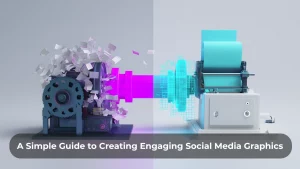Likes, shares, reach… Do you feel like you are drowning in data but still do not know if your social media is actually working? You see numbers going up, but it is not translating into more business, and you are not sure why.
The problem is that most social media metrics do not tell you what you really want to know: “Is this a good use of my time and money?”
This simple guide for UK SMEs will cut through the noise. We will show you the only three metrics you actually need to track to prove your social media is delivering a real return on investment (ROI).
First, Let's Ignore the 'Vanity Metrics'
Vanity metrics are numbers like follower count, likes, and impressions. They look good on the surface and can give you a nice ego boost, but they do not pay the bills. A post with 500 likes that leads to zero sales is less successful than a post with 10 likes that leads to one high-value client. Focusing on vanity metrics is one of the biggest mistakes small businesses make. To measure success, we need to track actions that are directly linked to business growth.
Metric 1: Website Clicks
This is the first true measure of success. It shows that someone was interested enough in your social media post to take the next step and visit your digital home.
- What it is: The number of people who clicked a link on your social media profile or post to visit your website.
- Why it matters: Driving traffic to your website is often the primary goal of social media. It moves potential customers from a platform you do not control (like Facebook) to one that you do (your website), where they can learn more about your services or make a purchase.
- How to track it: Use the free analytics tools on each platform (like Facebook Insights) to see ‘link clicks’, or use Google Analytics on your website to see how much traffic is coming from each social channel.
Metric 2: Enquiries or Leads
This is where social media starts to feel real. A lead is a potential customer who has shown direct interest in your service.
- What it is: The number of direct messages, contact form submissions, or phone calls you receive that originated from social media.
- Why it matters: Leads are the lifeblood of any service business. Tracking them proves that your social media activity is actively generating new business opportunities.
- How to track it: This can be as simple as keeping a tally. When a new enquiry comes in, ask them, “How did you hear about us?”. If they say “I saw you on Instagram,” add it to your count.
Metric 3: Cost Per Acquisition (CPA)
This is the ultimate metric. It tells you exactly how much it costs you to get a new paying customer through social media.
- What it is: The total amount you spent on social media (including time and ad spend) divided by the number of new customers you gained from it.
- Why it matters: CPA tells you if your social media is profitable. If it costs you £50 in time and ads to get a new client who pays you £500, that is a fantastic return. If it costs you £500 to get that same client, your strategy needs to change.
- How to track it: Add up your monthly social media costs. Then, track how many of your new customers came from social media. Divide the cost by the number of customers.
A Simple Toolkit for Tracking Your ROI
You do not need expensive, complicated software to track these metrics. All you need is:
- Platform Analytics: The free ‘Insights’ or ‘Analytics’ tab on Facebook, Instagram, and LinkedIn.
- Google Analytics: The free tool to track your website traffic.
- A Simple Spreadsheet: To track your leads and calculate your CPA.
So, what is a good ROI on social media? The answer is simple: it is a positive one. As long as the value you are getting out is greater than the time and money you are putting in, your social media is working.
By focusing on these three key metrics, you can finally have confidence that your social media is a valuable investment, not just a time-consuming chore.
Now that you know how to measure your success, the next step is building a plan worth measuring. Read our Ultimate Guide to Social Media Strategy to get started.



